Alchemy has captured the imagination of mystics, philosophers, and scientists throughout history. Its origins can be traced back to ancient times, where it flourished in various civilizations such as Egypt, Greece, and China. This mystical art has always been shrouded in secrecy and awe, as alchemists sought to unlock the secrets of existence and transform base materials into precious substances. The philosophical foundations of alchemy delve deep into the realms of metaphysics, spirituality, and the union of opposites. In this article, we will explore the origins of alchemy, its dualistic nature, the quest for transmutation, spiritual transformation, the symbolism it employs, and its lasting legacy. Join us on this journey of unraveling the enigmatic world of alchemy.
The Origins of Alchemy
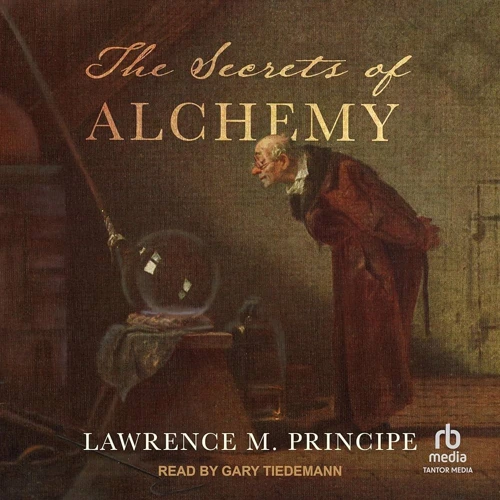
Alchemy, an ancient and mysterious practice, has origins that trace back to multiple sources. One of the most influential figures in alchemy is Hermes Trismegistus, the legendary sage who is believed to have authored the Emerald Tablet. This enigmatic text is said to contain the foundational principles of alchemy, elucidating the process of transmutation and the interconnectedness of the universe. The influence of Greek philosophy, particularly the works of Plato and Aristotle, also played a significant role in shaping the philosophical underpinnings of alchemy. The fusion of Egyptian, Greek, and other mystical traditions created the fertile ground for the emergence of this esoteric art. Through the internal html link below, you can delve deeper into the role of alchemy during the Islamic Golden Age.
Hermes Trismegistus and the Emerald Tablet
Hermes Trismegistus, a legendary figure in the realm of alchemy, is often credited with authoring the mysterious Emerald Tablet. This ancient text serves as a foundational document for alchemists, offering profound insights into the nature of reality and the transmutation of materials. The Emerald Tablet is said to contain the famous dictum “As above, so below,” which encapsulates the principle of correspondence between the microcosm and the macrocosm. Hermes Trismegistus is considered a bridge between the spiritual and physical realms, with his teachings reflecting a deep understanding of the hidden forces that govern existence. The Emerald Tablet’s symbolism and teachings have influenced alchemical practices and philosophies throughout the centuries, serving as a guiding light for seekers of wisdom and transformation. For a deeper exploration of alchemical symbolism and its connection to art, you can follow the internal html link to learn more about the intricate symbolism and iconography of alchemical art.
The Influence of Greek Philosophy
Greek philosophy exerted a profound influence on the development and philosophical foundations of alchemy. At the heart of this influence were the works of renowned thinkers such as Plato and Aristotle. Plato’s concept of the Forms, which posited that physical objects were imperfect reflections of idealized forms, resonated with alchemists seeking to transform base materials into purer substances. They viewed the transmutation process as a means to access these higher forms. Aristotle, on the other hand, contributed to alchemy through his emphasis on observation and experimentation. His ideas on the nature of matter and the elements influenced alchemists’ understanding of the composition and transformation of substances. Greek philosophy introduced the notion of the Microcosm and Macrocosm, which found resonance in alchemy. This concept suggested that the individual human being (microcosm) mirrored the structure and processes of the wider universe (macrocosm), emphasizing the interconnectedness of all things. The Ouroboros symbol, depicting a serpent devouring its own tail, became a powerful symbol in alchemy to represent the cyclic nature of existence, influenced by Greek philosophical ideas of eternal recurrence and the unity of opposites. The rich philosophical heritage of Greek thought became an integral part of alchemical theory, providing a framework for alchemists’ understanding of the universe’s composition and their quest for transformation.
The Dualistic Nature of Alchemy
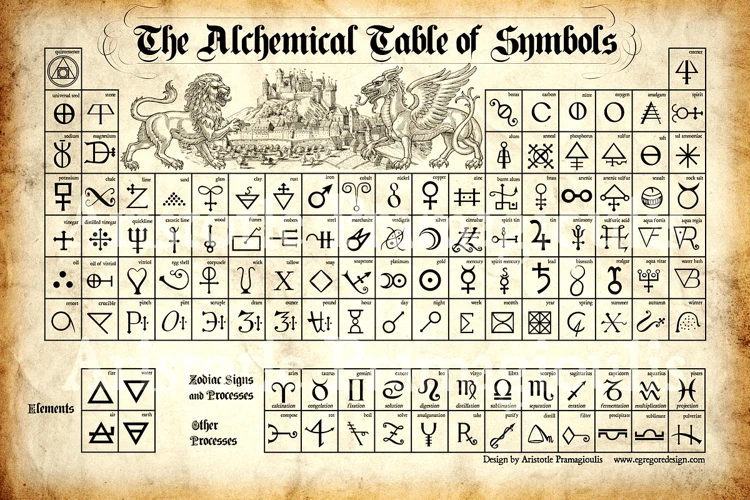
The dualistic nature of alchemy lies at the core of its philosophical foundations. One of the key concepts in alchemy is the idea of opposites and their union. Alchemists believed that everything in the universe is composed of opposing forces, such as hot and cold, light and darkness, and masculine and feminine. It is through the harmony and integration of these opposites that true transformation occurs. This notion is reflected in the alchemical symbol of the Yin-Yang, representing the interplay of opposing forces. Another aspect of this duality is the concept of the microcosm and macrocosm, which suggests that the individual alchemist’s inner journey reflects the larger cosmic processes happening in the universe. The intertwining of opposites and the union of the microcosm and macrocosm are fundamental principles of alchemical philosophy, guiding practitioners on their quest for understanding and transformation.
The Concept of Opposites
The Concept of Opposites lies at the core of alchemical philosophy. Alchemists believed that everything in the universe is composed of two opposing forces or principles. These opposing forces can be seen in various forms, such as hot and cold, light and dark, or masculine and feminine. The alchemical process aims to reconcile these opposing forces in order to achieve a higher state of harmony and transformation. Alchemists believed that by understanding and harnessing the power of these opposites, they could unlock the secrets of transmutation, turning base metals into gold and purifying the soul. This concept is often symbolically represented by the alchemical symbol of the ouroboros, a serpent or dragon devouring its own tail, representing the eternal cycle of creation and destruction. The integration and equilibrium of these opposing forces were considered essential for achieving spiritual enlightenment and inner alchemical transformation. Through the internal html link below, you can explore more about the fascinating symbolism and iconography in alchemical art here.
The Union of Microcosm and Macrocosm
The Union of Microcosm and Macrocosm in alchemy is a concept that explores the interconnectedness and correspondence between the individual human being (microcosm) and the larger universe (macrocosm). It is based on the belief that what exists in the heavens is mirrored within the individual, and vice versa. Alchemists saw the human body as a reflection of the entire cosmos, with its own internal systems and elements. They believed that by understanding and harmonizing the microcosm, one could tap into the universal forces and achieve spiritual transformation.
This concept is often illustrated through various symbols and analogies. One common analogy is that of the human body being akin to a smaller version of the universe itself. Just as the celestial bodies move in harmony and follow cosmic laws, the different components and energies within the individual’s body must also be in balance for enlightenment and transmutation to occur.
Alchemical texts frequently make use of correspondences between specific body parts and celestial elements. For example, the heart may be associated with the sun, while the brain corresponds to the moon. The five senses, representing the human experience, may be connected to the five elements of earth, air, fire, water, and quintessence.
To illustrate these concepts further, an HTML list can be used:
- The Union of Microcosm and Macrocosm emphasizes the interconnectedness of the individual and the universe.
- The human body is seen as a reflection of the larger cosmos.
- Harmonizing and balancing the microcosm leads to spiritual transformation.
- The analogy of the human body mirroring celestial movements is frequently used.
- Specific body parts and elements are associated through correspondences.
Within alchemy, the Union of Microcosm and Macrocosm is a fundamental concept that guides the practitioner towards self-realization and unity with the greater cosmic order. It invites introspection and contemplation of the interplay between the individual and the universe, unlocking profound insights into the nature of existence and the path towards enlightenment.
Alchemy and Transmutation
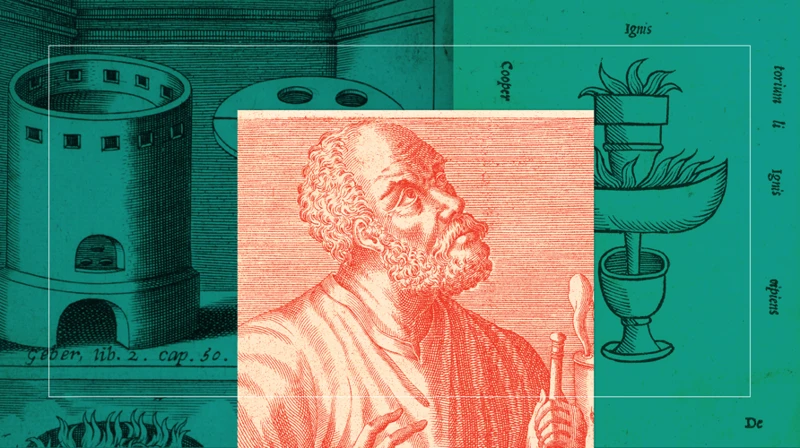
At the heart of alchemy lies the pursuit of transmutation, the transformation of base metals into noble substances such as gold or silver. This quest for the Philosopher’s Stone, a legendary substance believed to possess the power of transmutation, consumed the minds of alchemists throughout the ages. While some view this pursuit as purely metaphorical, others argue that there may be a kernel of truth to alchemical transmutation. The alchemical process involved a series of intricate operations, such as distillation, calcination, and fermentation, symbolizing the purification and refinement of not just metals, but also the alchemist’s own soul. The alchemical quest for transmutation went beyond the realm of material substances; it was a spiritual journey, seeking the metamorphosis of the self. Whether regarded as a literal pursuit or a symbolic path of self-transformation, the concept of transmutation remains a central pillar in the philosophical foundations of alchemy.
The Quest for the Philosopher’s Stone
The Quest for the Philosopher’s Stone was at the heart of alchemy. According to alchemical beliefs, the Philosopher’s Stone was a legendary substance with the power to transmute base metals into noble metals, such as lead into gold. This quest was not merely a literal pursuit for material wealth but also a metaphorical and spiritual journey towards enlightenment and perfection. Alchemists dedicated their lives to uncovering the secrets of the Philosopher’s Stone, employing a combination of experimentation, observation, and spiritual practices. The search for this elusive substance involved intricate laboratory processes, symbolic rituals, and intricate alchemical recipes. The alchemists believed that the Philosopher’s Stone possessed not only the power to transmute metals but also the ability to grant eternal life and spiritual illumination. It was considered the ultimate achievement in alchemy, representing the union of opposites and the transformation of the self. This mystical stone symbolized the alchemist’s inner work and the alchemical process of purification and refinement. It was believed that by successfully obtaining the Philosopher’s Stone, one could attain not only material wealth but also spiritual enlightenment and transcendence.
Metaphor or Reality?
The question of whether alchemy is a metaphorical pursuit or a physical reality has long intrigued scholars and practitioners. Some argue that alchemy is purely symbolic, using the transmutation of base metals as a metaphor for inner transformation and spiritual enlightenment. They believe that the alchemical processes are allegorical representations of the human journey towards perfection. These symbolic interpretations view the Philosopher’s Stone, the legendary substance that grants the power of transmutation, as a metaphor for self-realization rather than an actual physical substance.
On the other hand, there are those who assert that alchemy was not merely a philosophical or spiritual practice but a tangible science with the objective of achieving tangible results. These proponents claim that alchemists were dedicated to discovering the secrets of nature, unlocking the hidden properties of matter, and ultimately achieving the transmutation of metals. They argue that alchemists conducted extensive experiments, recorded their observations meticulously, and developed laboratory methodologies for their pursuits.
The debate surrounding the reality of alchemy may never be definitively resolved. It is possible that alchemy straddles the line between metaphor and reality, incorporating elements of both. Alchemical texts and manuscripts often employ symbolic language to convey their teachings, while also providing practical instructions for laboratory experiments and procedures. This duality suggests that alchemy may have been a hybrid discipline, blending spiritual and scientific aspects.
Regardless of the ultimate answer, the powerful symbolism and transformative concepts of alchemy continue to captivate and inspire seekers of knowledge and wisdom. It is through this enigmatic combination of metaphor and reality that alchemy has left an indelible mark on the history of philosophy, science, and spirituality.
Alchemy as Spiritual Transformation
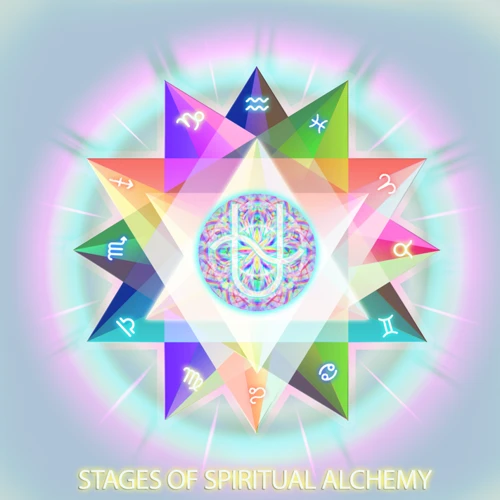
Alchemy goes beyond the realm of physical transformation and delves into the realm of spiritual metamorphosis. The alchemist’s inner journey is considered an integral part of the alchemical process. By working with substances and elements in the laboratory, the alchemist seeks to mirror and catalyze their own personal growth and transformation. This spiritual path often involves confronting and integrating one’s own shadow and embracing both the light and dark aspects of oneself. The ultimate goal of alchemical spiritual transformation is often symbolized by the concept of the Alchemical Wedding, a union of the masculine and feminine principles within oneself. This symbolic union represents the integration of opposing forces and the attainment of inner balance and wholeness. Through this inner alchemical work, the alchemist transcends their physical limitations and connects with the divine essence within.
The Alchemist’s Inner Journey
The Alchemist’s Inner Journey is a central theme in the practice of alchemy, representing the transformative process of the alchemist themselves. It goes beyond the external transmutation of materials and delves into the realm of personal growth and spiritual evolution. The alchemist embarks on a symbolic and metaphorical quest to uncover the depths of their own being, seeking to transmute their inner flaws and weaknesses into virtues and enlightenment.
During this inner journey, the alchemist undergoes a series of stages that mirror the processes found in the laboratory. Just as base metals are purified and refined in the alchemical laboratory, the alchemist seeks to purify their own soul and refine their understanding of the world. This involves introspection, self-reflection, and the examination of one’s own thoughts, emotions, and desires.
The alchemist’s inner journey is characterized by the pursuit of balance and harmony within themselves. This entails reconciling the opposites that exist within them – the masculine and feminine, the active and passive, the light and dark. By integrating these opposing aspects, the alchemist aims to achieve a state of wholeness and unity.
Symbolism plays a crucial role in the alchemist’s inner journey, as it provides a language through which they can understand and communicate their experiences. Various symbols, such as the ouroboros – the ancient symbol of a serpent eating its own tail, represent the cyclical nature of life and personal transformation.
The alchemist’s inner journey is not only introspective but also a pursuit of knowledge and wisdom. They strive to acquire esoteric knowledge and spiritual insights that enable them to navigate the complexities of existence. Through this journey, the alchemist seeks not only personal enlightenment but also a deeper understanding of the interconnectedness of all things and their place in the grand tapestry of the universe.
The Alchemical Wedding
The concept of the Alchemical Wedding holds profound significance in the realm of alchemy. It symbolizes the union of opposing forces and the integration of the masculine and feminine principles, often represented by the sun and moon, respectively. In alchemical terms, this union represents the coming together of the conscious and unconscious aspects of the alchemist’s psyche. It is believed to be a transformative process where the alchemist experiences a deep inner integration and achieves spiritual wholeness.
The Alchemical Wedding is not merely a symbolic concept but is also seen as a personal and spiritual journey undertaken by the alchemist. It is an inner quest for self-discovery, inner harmony, and enlightenment. Through intense introspection and self-reflection, the alchemist seeks to reconcile the opposing facets within themselves and attain a state of unity.
This alchemical process is inherently transformative, with the alchemist shedding their old self and emerging as a renewed and awakened being. The Alchemical Wedding also serves as a metaphor for the union of the mundane and the divine, as the alchemist aims to connect with the higher realms of spirituality and transcendental knowledge.
The symbolism of the Alchemical Wedding can be found throughout alchemical art and texts. It often depicts the union of a king and queen or a bride and groom, representing the integration of opposites and the culmination of the alchemical journey. The alchemist strives to become the alchemical “Philosopher’s Stone,” the ultimate goal of the alchemical work, symbolizing the attainment of divine wisdom and immortality.
The concept of the Alchemical Wedding in alchemy is a profound symbolic representation of the union of opposites, the integration of masculine and feminine principles, and the spiritual transformation of the alchemist. It is a personal and inner journey towards self-discovery, unity, and enlightenment, symbolizing the merging of the mundane and the divine. Through this transformative process, the alchemist aspires to become the embodiment of the Philosopher’s Stone, the pinnacle of alchemical achievement.
The Alchemical Symbolism
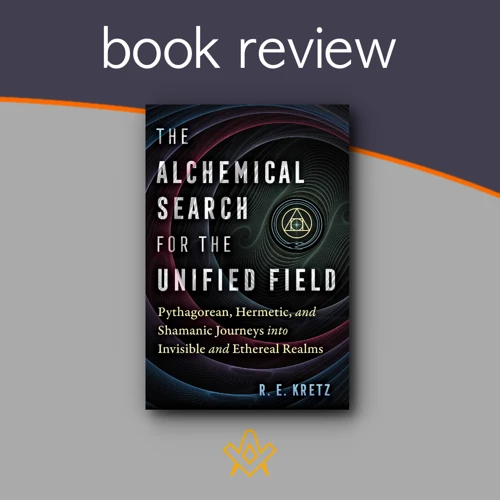
The world of alchemy is rich in symbolism, using intricate images and allegorical representations to convey its profound teachings. The language of symbols in alchemy is a key element in understanding its philosophical foundations. These symbols often depict concepts such as transformation, balance, and the union of opposites. One of the most well-known symbols in alchemical art is the ouroboros, a serpent or dragon devouring its own tail, representing the eternal cycle of life, death, and rebirth. Another important symbol is the Four Elements – earth, air, fire, and water – which are believed to be the fundamental building blocks of all matter. Alchemy incorporates the Three Principles, also known as the alchemical tria prima, which consist of salt, sulfur, and mercury. These symbols serve as a visual language that conveys deep esoteric concepts, and exploring their meanings provides insight into the mystical world of alchemy.
The Language of Symbols
The Language of Symbols in alchemy is a complex and intricate system that serves as a means of communication for practitioners. Symbols hold deep meaning and are used to represent various elements, processes, and concepts within alchemical practices. These symbols often derive from elements of nature, astrology, mythology, and religious iconography. For example, the symbol of the ouroboros, a serpent or dragon devouring its own tail, represents the eternal cycle of life, death, and rebirth. Another widely recognized symbol is the caduceus, the intertwined serpents on a staff associated with the Greek god Hermes, representing balance, harmony, and healing. In addition to these specific symbols, alchemy employs a plethora of geometric shapes, such as triangles, circles, and squares, each carrying its own symbolism and significance. Using these symbols, alchemists encoded their knowledge, allowing for the transmission of wisdom across time and cultures. Whether inscribed in manuscripts, carved into laboratory equipment, or depicted in alchemical art, the language of symbols in alchemy is a powerful tool for conveying complex ideas and concepts.
The Four Elements and the Three Principles
The Four Elements and the Three Principles are fundamental concepts in alchemy that provide a framework for understanding the nature of existence and transformation. In alchemical philosophy, the Four Elements – Earth, Air, Fire, and Water – represent the building blocks of all matter. Each element is associated with specific qualities and properties. Earth symbolizes stability, solidity, and physicality; Air represents intellect, communication, and changeability; Fire signifies passion, transformation, and purification; and Water embodies emotions, intuition, and fluidity. These elements are believed to exist not only in the external world but also within the alchemist themselves as microcosmic reflections of the macrocosm.
In addition to the Four Elements, alchemy also recognizes the Three Principles, also known as the Tria Prima. These principles are Sulphur, Mercury, and Salt. Sulphur corresponds to the principle of flammability, volatility, and spiritual essence. Mercury symbolizes the transformative energy, fluidity, and adaptability. Salt represents stability, fixity, and corporeal nature. The interaction and combination of these principles with the Four Elements form the basis for the alchemical processes of purification, transmutation, and spiritual transformation.
To understand the relationships and interactions between these elements and principles, alchemists often used complex symbolic diagrams, tables, or lists. Through these visual representations, they sought to convey the intricate interplay of energies and qualities involved in the alchemical work. These visual aids served as guides for the alchemist’s experimentation, observation, and contemplation as they sought to harness and manipulate the forces of nature and transmute base materials into higher forms. The understanding of the Four Elements and the Three Principles formed a core foundation for alchemical theory and practice, allowing alchemists to explore the mysteries of the universe and the depths of the human spirit.
The Legacy of Alchemy
Alchemy has left a lasting legacy that extends far beyond its mystical origins. Although alchemy’s pursuit of transmutation and the Philosopher’s Stone may not have yielded the desired physical transformations, its impact on various fields is undeniable.
1. Chemistry: Alchemy laid the groundwork for modern chemistry. While early alchemists sought to transmute base metals into gold, their experiments led to significant discoveries in chemical reactions, apparatus development, and laboratory processes. Alchemical processes, such as distillation and sublimation, became crucial techniques in later chemical practices.
2. Symbology and Iconography: Alchemical symbolism, with its rich imagery and hidden meanings, influenced art, literature, and esoteric traditions. The alchemical quest for transformation was often depicted through intricate illustrations, such as the famous alchemical diagrams and engravings. These symbolic representations continue to captivate artists and researchers today.
3. Philosophy and Psychology: The philosophical ideas espoused by alchemists, including the concept of the union of opposites and the pursuit of spiritual transformation, had a profound impact on Western philosophy and psychology. Carl Jung, the renowned Swiss psychologist, was particularly fascinated by alchemy and incorporated its theories into his analytical psychology framework.
4. Spirituality and Esoteric Traditions: Alchemy’s focus on inner transformation and the search for spiritual enlightenment resonates with various spiritual and esoteric traditions. Elements of alchemical symbolism can be found in mystical practices, such as Kabbalah and Hermeticism, as well as in the teachings of various mystical orders and secret societies.
5. Literature and Popular Culture: Alchemy has inspired numerous literary works, including famous novels like Paulo Coelho’s “The Alchemist” and Umberto Eco’s “Foucault’s Pendulum.” Its themes of transformation and the search for meaning continue to captivate audiences and fuel the imagination in popular culture.
The legacy of alchemy is a testament to the enduring fascination with the mysteries of existence, the quest for knowledge, and the transformative power of the human spirit. While alchemy may have evolved and transformed over the centuries, its essence lives on in the realms of science, art, philosophy, and spirituality, leaving a profound impact on human culture and our collective understanding of the world.
Conclusion
In conclusion, the philosophical foundations of alchemy reveal a complex and multifaceted discipline that has captivated individuals throughout history. From its ancient origins to its enduring symbolism, alchemy has woven together elements of mysticism, science, and spirituality. It is a testament to humanity’s eternal quest for knowledge and transformation. Throughout the ages, alchemists sought not only to transmute base metals into gold but also to embark on a profound inner journey of self-discovery. They delved into the realm of symbolism, using archetypes and allegories to communicate profound truths about the nature of existence. The legacy of alchemy lives on in various forms, from its influence on art and literature to its enduring impact on scientific practices. Ultimately, alchemy reminds us of the inherent interconnectedness of all things and the boundless potential for transformation within ourselves and the world around us. As we contemplate the philosophical foundations of alchemy, we are invited to embrace the mysteries of life and embark on our own alchemical journey of self-discovery and enlightenment.
Frequently Asked Questions
What is alchemy?
Alchemy is an ancient practice that blends elements of philosophy, mysticism, and proto-science. It involves the pursuit of transmuting base materials into more valuable substances, such as turning lead into gold.
Who were the key figures in alchemy?
Some key figures in alchemy include Hermes Trismegistus, the legendary author of the Emerald Tablet, and notable philosophers like Plato and Aristotle, who influenced alchemical thought.
Did alchemists actually succeed in transmuting substances?
While there are historical accounts of alchemists claiming to have achieved transmutation, the actual success of these claims remains disputed. The quest for the Philosopher’s Stone, a mythical substance believed to enable transmutation, captivated many alchemists.
Is alchemy purely a physical practice?
No, alchemy encompasses both physical and spiritual aspects. It is not solely concerned with manipulating matter but also with the inner transformation of the alchemist, known as spiritual alchemy.
What is the significance of the Emerald Tablet?
The Emerald Tablet is a foundational text in alchemy. It is believed to contain the principles of alchemical transformation, symbolically described in cryptic language. It emphasizes the interconnection between the microcosm (human) and the macrocosm (universe).
What role does symbolism play in alchemy?
Symbolism is central to alchemy, as it allows for the transmission of complex ideas and principles in a concise manner. Alchemical symbols, such as the Ouroboros, the serpent devouring its own tail, convey the cyclical nature of creation and transformation.
How did alchemy influence the development of modern science?
Alchemy paved the way for modern science by laying the foundation for experimental practices and laboratory techniques. Many alchemical experiments led to significant discoveries in fields such as metallurgy and medicine.
What is the relationship between alchemy and spirituality?
Alchemy and spirituality are intrinsically linked. Alchemy, particularly spiritual alchemy, aims to transform the self and achieve a higher state of consciousness. It sees the path of spiritual enlightenment and the transmutation of substances as interconnected processes.
What are the four elements and their role in alchemy?
The four elements—earth, air, fire, and water—are fundamental to alchemical philosophy. They represent different qualities and stages of transformation. Earth symbolizes stability, air represents intellect, fire signifies transformation, and water represents emotions and purification.
What is the legacy of alchemy?
The legacy of alchemy is vast and enduring. Although it is not practiced in the same form today, it laid the groundwork for modern chemistry, influenced diverse fields of study, and provided a framework for exploring the mysteries of existence.








